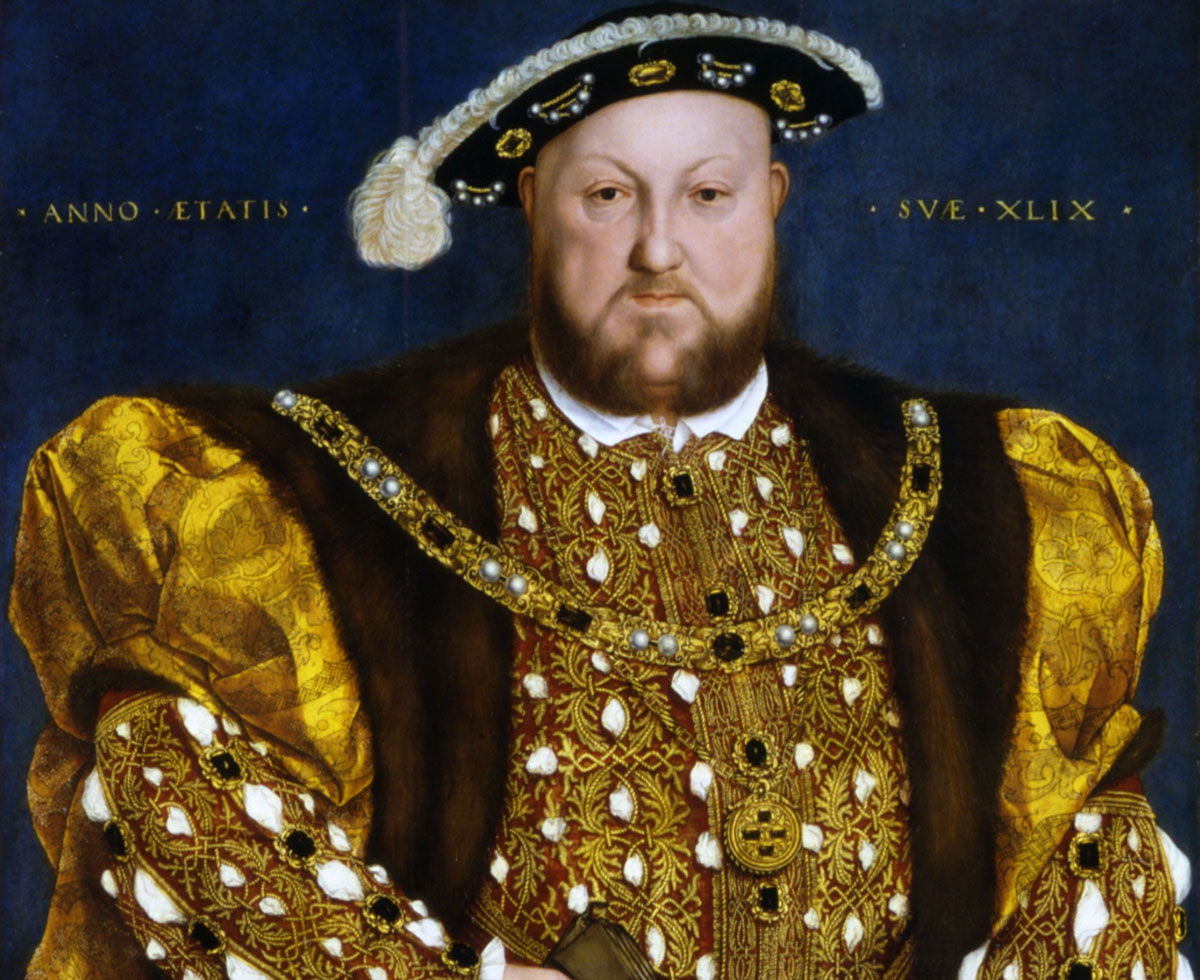Henry VIII Dies at Greenwich
One of England’s best-known kings died on 28 January 1547.

The death of one of England’s best-known (if not best-loved) kings took place amid an atmosphere of court intrigue and religious ferment that had characterised the last twenty years of his reign. Though Henry died a Catholic – albeit one in schism from the Church of Rome, a position he had compensated for by creating his own title of Head of the Church of England – the hand he squeezed as he died in his bed about two-o'clock that January morning, was that of his crypto-Protestant Archbishop of Canterbury, Thomas Cranmer, who was soon to emerge in the new reign of Henry's nine-year-old son as a leading force in the Protestant Reformation that was about to be introduced.
The final weeks of Henry's life were full of drama. As the king had gradually deteriorated in health from mid-1545 onwards, the influence of the Seymour faction at court – led by Prince Edward's uncle, the future Protector Somerset – had grown. Strongly sympathetic to the Protestant Reformers, this group – not least via Henry's physician, Sir William Butts –gradually swung the religious climate in an evangelical direction. They were opposed by the staunchly conservative Duke of Norfolk, who had recovered from the disaster of his daughter, Henry's fifth wife, Catherine Howard, being executed for adultery in 1542.
Capitalising on Henry's isolation and failing health, the Seymours took advantage of the foolish bragging of Norfolk's brilliant but reckless poet-courtier son, the Earl of Surrey, that his father would be a future Regent. Surrey was denounced for treasonably using the royal arms of Edward the Confessor and he and his father were sent to the tower. Surrey was executed on January 19th – his father's appointment with the block was set for January 28th he was saved by Henry's death which lapsed the warrant.
The Council of Regency that Henry VIII had named at Christmas 1546 for the future Edward VI, had detailed no presiding officer or overall Regent. But as Henry was breathing his last, Seymour got the allegiance of the key court insider, Sir William Paget. Seymour then galloped off to secure the young Edward VI, who was at Hatfield, and returning to London convened a Council meeting where Paget proposed his nomination as Lord Protector. A Protestant constitutional coup d'etat had taken place.
What did Henry VIII die of? The old moralistic writers blamed syphilis, perhaps because of the popular image of the king as a six-wife Don Juan, but the evidence for it has always been flimsy. One could say, not entirely flippantly, 'old age' – fifty-six years in sixteenth-century Europe was not exactly an untimely end. Over-eating, given the bloated image immortalised by Charles Laughton on film has been another explanation.
But a few years ago in History Today (September 1989) Susan Maclean Kybett offered an intriguing alternative. Based on a detailed evaluation of Henry's medical history leading up to his death, including the ulcerated legs 'cauterised with hot irons in order to stem the fungoid growth, and his puffy features, she advanced the hypothesis of nutritional deficiency – scurvy, exacerbated by the time of year.
If this is so, the powerful autocrat whom Charles Dickens described as a 'blot of blood and grease upon the History of England met his end not through too many chicken legs, or over- indulgence in amorous pleasures, but through a lack of fresh fruit and veg.




